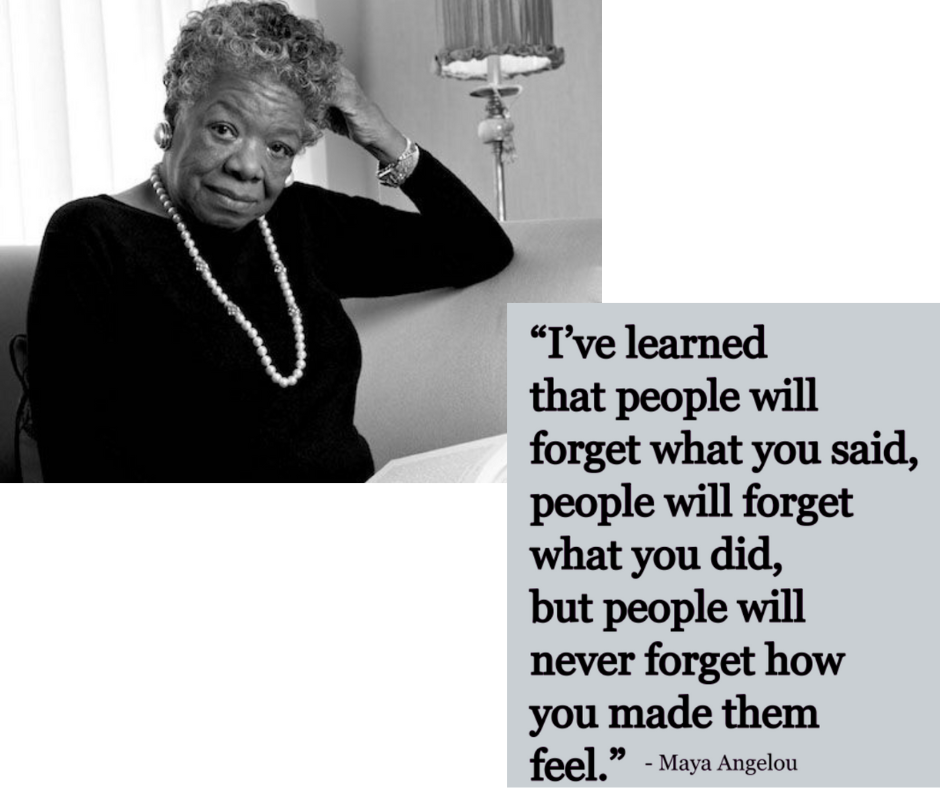Leading in times of uncertainty - What can the executive team do when they don't even know the answers?

When uncertainty is rampant, and the senior management team no longer has answers - only questions - it is extremely difficult to cope. They would have to manage changes about which they themselves have only fragmented information.
"We're expected to reassure our teams, to keep people, when we don't know what's going to happen to us."
"How do I give direction, how do I keep people calm when I don't know what's going to happen?"
Many companies are in the process of selling, downsizing, reorganising, outsourcing - big changes that can be very turbulent and emotionally charged. Out-of-control situations, little or no information, an elusive vision - even for the executive leadership team.
This is a stressful time for all. Not enough information. There are no sure answers.
Colleagues are scared, some key people have already left, and admittedly senior leaders themselves are planning - or preparing - to leave.
And executives are standing there, often without answers - while others are waiting for them to grab hold. A lot of strategy meeting turns into a standstill and then into crisis mode, with the management trying to piece together the picture from the scraps of information and formulate messages to regional or global leadership.
How can a management team create structure and stability in uncertainty, and retain their people?
Survival Kit for uncertain times:

I. Support yourself emotionally

The feeling of uncertainty, getting lost is not avoiding the management team either. They are people, not machines. The only difference is that they have to support and "hold" not only themselves, but others as well.
And they can only do that if they are aware of their own feelings - not suppressing them, but managing them consciously. Their anxieties and fears are just as real - and if they are not given space, they undermine clarity, decision-making, and the very sense of stability they're meant to provide for others.
Leaders don't need to have all the answers — but they do need the courage to pause, reflect, and resource themselves, so they can show up with presence and integrity.
Consciously managing your own emotions is not a weakness — it's a leadership responsibility. Make time and space to share emotions, feelings, and thoughts with one another.
II. Work together as a team – create structure and consistency in how you operate

The worst thing in times like this is when everyone tries to "survive" on their own, following individual strategies.
This is not the time for solo heroism — it's the time to come together, to take collective action and support each other. And joint efforts can only be successful if there are fixed points in the chaos — frameworks, anchors you can return to.
III. Organize regular — e.g. weekly — executive team check-ins.
The goal: sharing emotions, creating a shared understanding of the situation, making decisions, and aligning communication.
1. Let expressing emotions and feelings be a part of your gatherings.

Here, there's no need to "fix" anything, just to "say it out loud," and be present for each other. Talk openly with each other about difficult emotions (fear, anger, helplessness), thoughts, vent, and then reflect on:
- What can you influence?
- What can support you during these tough times?
- How can you support each other as a team?
👉 Expressing emotions and thoughts doesn't only help you - it also supports you in shaping communication towards the teams, as they are going through similar experiences with similar feelings and thoughts swirling in their minds. This can help dissolve negative feelings among you and support others in the organization as well.
👉 Showing you understand their feelings, that you are in this together makes communication authentic and credible.
2. With a solution-focused approach, collect, decide and strategize:
-
What do we know for sure, and what don't we?
-
What information does the organization expect from us?
-
What can be communicated? How?
-
What don't we know yet, and when might we find out?
-
What scenarios are we preparing for?
-
Who will have what role in these?
-
When will be the next moment when we can share new information?
3. Develop a common communication framework:
-
Create 3–4 basic templates for frequent questions that you and other leaders can use.
-
Record regularly updated "leadership messages."
-
The communication style should be clear, simple, and human.
-
Share these with middle managers via internal newsletters or calls.
4. Establish fixed checkpoints:
-
How often do you reassess the situation?
-
When do you communicate within the organization?
-
Who maintains contact with the key people?
-
On what aspects do you ask for feedback from the teams?

IV. Support your middle managers and collaborate with them closely: they are your allies acting as bridges between you and the people in the company
Middle managers often find themselves alone with questions — both from below and above. They "deliver" messages to the teams while living with their own uncertainties.
They are under the greatest pressure, yet they have a major influence on the their teams — which makes them key players.
1. Develop communication templates together with them, or at least ensure they receive help in communication.
Support them and provide examples so they feel confident to speak up about difficult issues.
2. Involve them in shaping solutions, not just executing decisions.
Ask: What concerns people? What questions are they waiting for answers to? What can we do?
3. Create a regular leadership Q&A forum where they can ask questions and ventilate.
Give them the opportunity to express their own uncertainties and emotions.
4. Visit their team meetings so they feel they are not alone.
V. Teams long for genuine human presence, attention and care and inclusion - what can you do?

1. Speak about the things you can - don't be afraid there is no news!
The key is frequent, honest, and open communication. Even if there is no new information, be present.
2. Have regular, predictable connections
There is a lot of uncertainty in people's lives. A fixed weekly check-in, a team call or meeting, a short internal newsletter — these help restore the feeling of stability.
3. Pay attention to your key people 🔑
It's no accident that I don't use the word "talent" — because a key person can also be someone who quietly and reliably carries the processes on their shoulders, whose knowledge, experience, and connections are irreplaceable in the system but who isn't recognized as "talent."
➡️ It's worth organizing 15-minute one-on-one conversations or coffee chats with these key people.
Three simple solution-focused questions you can always ask to show care:
👉 "What do you consider especially important in your work right now?"
👉 "What supports you to cope during this period?"
👉 "In what ways would my support be useful to you?"
Attention, presence, and curiosity often mean more than grand words.
4. Organize weekly check-ins with the teams! Keep the team's emotional state 'maintained'
👉 Ask, don't just inform
"How are you doing right now?"
"What questions or thoughts do you have?"
"What could help you the most right now, even if we can't provide more information?"
"What would help you beyond information?"
"What do you see as the biggest challenges right now?"
"What stable points have you experienced lately?"
"What else could we do to help you feel even safer?"
"What questions keep coming back repeatedly?"
5. Work and think together with the team about what kind of resource the team can be in these difficult times.
"What is the team's strength: what do we appreciate about each other, and how can we support each other the most right now?"
6. Involve them in shaping solutions, not just executing decisions. Create a platform where anyone can raise ideas and suggestions—not just the leadership.
What should we do if we have no information to share?
❗The most important rule: no communication is the worst thing we can do. It's much better to say openly that we don't have any new information.
This is not a weakness, but honesty and presence. And right now, this is exactly what is needed.
Even in the toughest situations, presence and staying connected are crucial. You don't always have to give concrete answers — sometimes it's enough to honestly share that we are working on the issues and that we are still here. Open, regular communication creates safety and trust.
❗The key: frequent connection, honesty, and collaboration and co-creating solutions.
Can we be good leaders under such circumstances?
The answer is: yes.
Now is exactly the time to be a truly good leader.

☝️ What is needed most is not a leader who has answers to every question, but one who is present and works together with their team.
☝️ Not a perfect leader, but an honest one.
☝️ Not a hero, but a partner, an ally.
In these times, what truly matters is that you are there, present — for each other and for your team. Human presence, a steady rhythm, collective reflection, and honest communication are what provide a sense of security even amid great uncertainty.

I have often experienced such situations as an executive.
Now, I support executive teams with a solution-focused approach to help them successfully withstand these challenges and develop effective operating systems and internal communication strategies.
